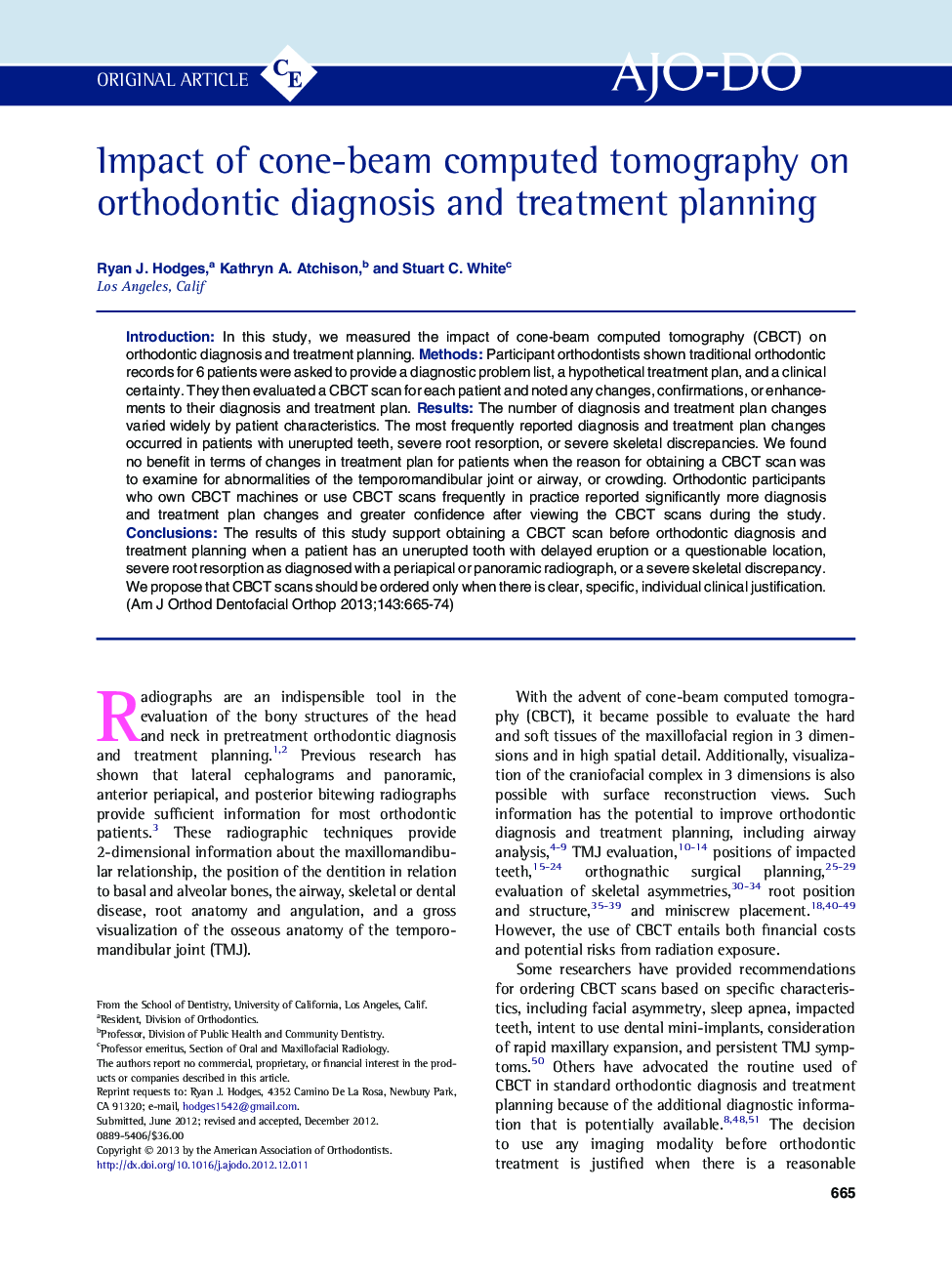| Article ID | Journal | Published Year | Pages | File Type |
|---|---|---|---|---|
| 3116616 | American Journal of Orthodontics and Dentofacial Orthopedics | 2013 | 10 Pages |
IntroductionIn this study, we measured the impact of cone-beam computed tomography (CBCT) on orthodontic diagnosis and treatment planning.MethodsParticipant orthodontists shown traditional orthodontic records for 6 patients were asked to provide a diagnostic problem list, a hypothetical treatment plan, and a clinical certainty. They then evaluated a CBCT scan for each patient and noted any changes, confirmations, or enhancements to their diagnosis and treatment plan.ResultsThe number of diagnosis and treatment plan changes varied widely by patient characteristics. The most frequently reported diagnosis and treatment plan changes occurred in patients with unerupted teeth, severe root resorption, or severe skeletal discrepancies. We found no benefit in terms of changes in treatment plan for patients when the reason for obtaining a CBCT scan was to examine for abnormalities of the temporomandibular joint or airway, or crowding. Orthodontic participants who own CBCT machines or use CBCT scans frequently in practice reported significantly more diagnosis and treatment plan changes and greater confidence after viewing the CBCT scans during the study.ConclusionsThe results of this study support obtaining a CBCT scan before orthodontic diagnosis and treatment planning when a patient has an unerupted tooth with delayed eruption or a questionable location, severe root resorption as diagnosed with a periapical or panoramic radiograph, or a severe skeletal discrepancy. We propose that CBCT scans should be ordered only when there is clear, specific, individual clinical justification.
